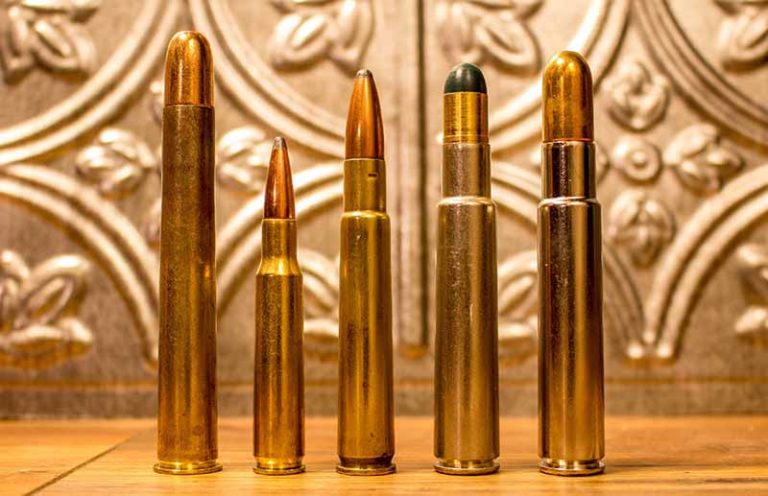
Rigby cartridges remain undeniably classic chamberings for any generation or pursuit.
We spotted the boar crossing a cut lane and immediately put on a stalk; he was worthy of attention. His profile alone indicated a good, mature hog, with no doubt he was a shooter, even at 200 yards. Turning the corner, we saw the boar run. I swung on his shoulder and broke the trigger as it crossed the vertical plane of his vitals. I heard the bullet strike, and despite the fact that the rains had just subsided, we found blood quickly. As it has done so many times over the last century, the .275 Rigby had done its job neatly and effectively.
John Rigby & Company can trace its roots to Dublin, Ireland, in 1775, through to London, England, today; in spite of a short jaunt here in the United States, the company is situated where it belongs, making fantastic firearms worthy of the pedigree. But what so many people overlook is Rigby’s contributions to the cartridge world, and their effect on the modern ballistics.
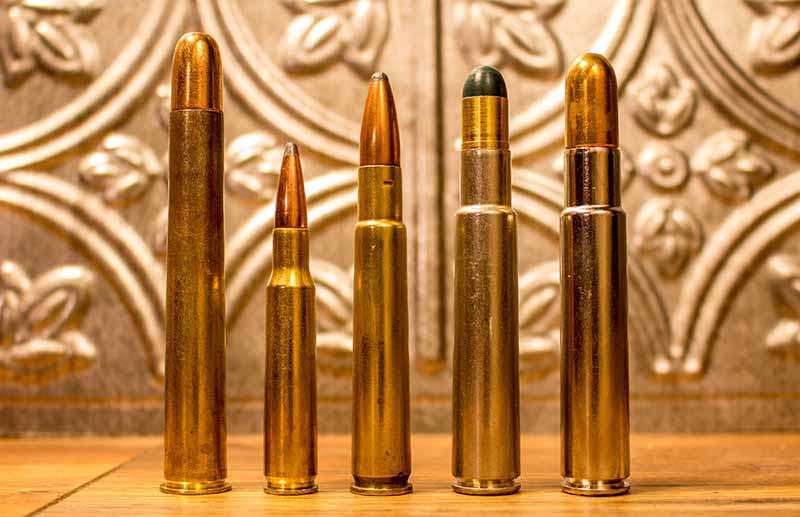
All That’s Gold Does Not Glitter
I’m sure that even the novice rifleman could name one or two cartridges with the Rigby surname, yet one of the most important doesn’t bear the family name or even get the credit worthy of its performance. It did, single-handedly, set the benchmark for a dangerous-game-stopping rifle, though its tenure was cut short due to some colonial insurrections.
The .450 3¼-inch Nitro Express was developed by John Rigby & Co. in 1898. There were other .450s designed for use with blackpowder, but Rigby’s .450 NE was the first Nitro Express cartridge designed for use with “nitro” or smokeless powder. It’d drive a 480-grain bullet to a muzzle velocity of 2,150 fps and would become the favorite of many traveling sportsmen and professional hunters alike, until the Crown banned all .450-caliber ammunition in its colonies in 1907, due to the uprisings in India and Sudan. (The concept was to deny access to those colonials with .577-450 Martini-Henry rifles.) To circumvent the problem, many companies designed a cartridge with similar ballistics, like the .470 NE, the .475 NE and the .475 No. 2 Jefferies. Still, to this day, the .450 3¼-inch NE makes a perfect choice for the dangerous game hunter.
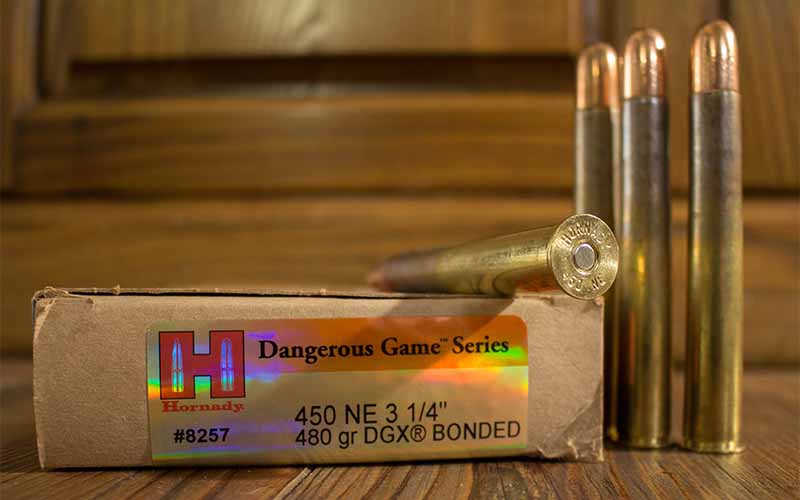
The ballistic formula of the .450 NE would go on to inspire Winchester’s 1956 .458 Winchester Magnum, which did its best to replicate the concept, though it certainly fell short. Using a 510-grain bullet at an advertised muzzle velocity of 2,150 fps, the .458 Winchester didn’t reach those numbers for at least four decades. Though the .470 Nitro Express would become the most popular of the rimmed cartridges for single-shots and double rifles in this class, Rigby’s .450 NE remains a solid choice for any hunter.
The 7×57 Rigby. Wait, What?
John Rigby & Co. had a business arrangement with Mauser of Germany in the late 19th century, importing their fantastic Model 98 actions and giving them British stocks and appointments. Rigby offered the 7x57mm Mauser as one of the chambering for their rifles—understandably, it was and is a fantastic hunting cartridge—but decided to rename the cartridge to make it more palatable to the British market. This wasn’t uncommon; the .404 Jeffery was known as the 10.75x73mm on the European continent.
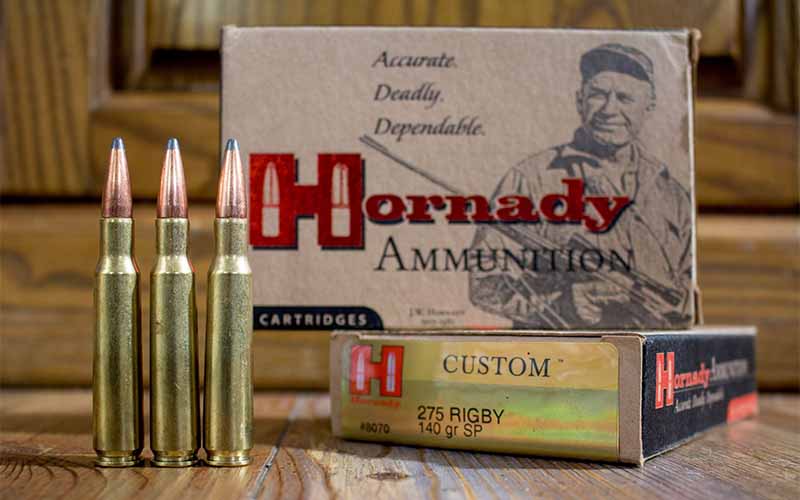
The .275 Rigby is, was and ever shall be nothing more and nothing less than the 7x57mm Mauser, and that’s certainly not a bad thing. The classic design uses the full gamut of the 7mm bullets, with the 175-grain bullets having made the reputation for the cartridge. But anyone interested in the .275 Rigby should be aware of the .275 Rigby HV chambering. The lead of the chamber has been revised to optimize performance with the 140-grain spitzer bullet; the HV chamber won’t accept the 175-grain bullets, and only a handful of the 150-, 156- and 160-grain bullets will work in the HV chamber.
Walter Dalrymple Maitland Bell—better known as Karamojo—used the .275 Rigby for his legendary ivory hunts across the African continent. Col. Jim Corbett used the .275 Rigby rifle presented to him for killing the Champawat tigress to end the careers of many more man-eaters. I’ve had the pleasure of holding Corbett’s rifle. It’s a lightweight, well-balanced gun, and though it bears no sign of either bluing or stock finish due to exposure to the elements while on the hunt, it remains a classic Rigby design. Bell and Corbett are just two examples of hunters who’ve risked their lives among the world’s most dangerous game with a .275 Rigby in hand.
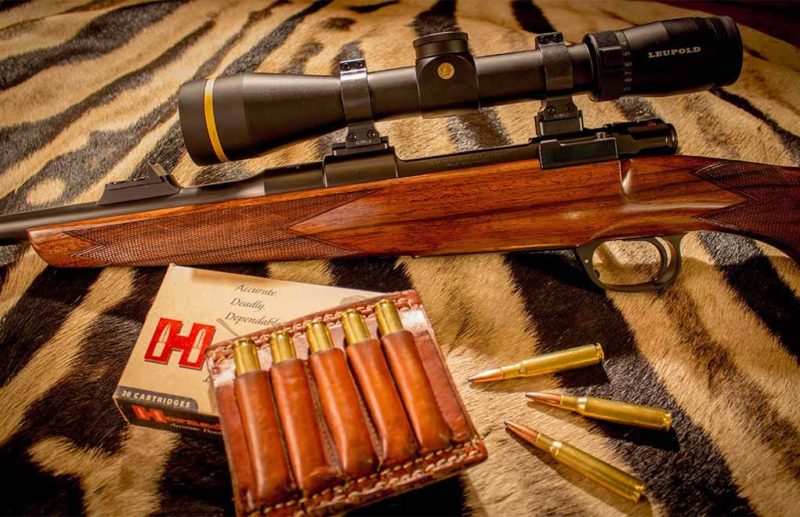
The .275 Rigby isn’t a speed demon, but it isn’t a slow poke, either. In fact, I feel it makes a better choice than a .243 Winchester or .30-30 for a young hunter: Its recoil level is wonderfully mild, yet the cartridge has a bullet weight selection suitable for everything south of the true heavyweights.
The Perfect Medium?
The .350 Rigby Magnum came in 1908 and was an absolute original. Using a 45-degree shoulder—which would carry over to the .416 Rigby—on a rimless case, the .350 Rigby is a sensible design. It has a rim diameter close enough to the .375 H&H that the same bolt face will handle both cartridges. The .350 Rigby Magnum will use the .358-inch diameter bullets common to the .358 Winchester, .35 Whelen, .358 Norma Magnum and .350 Remington Magnum.
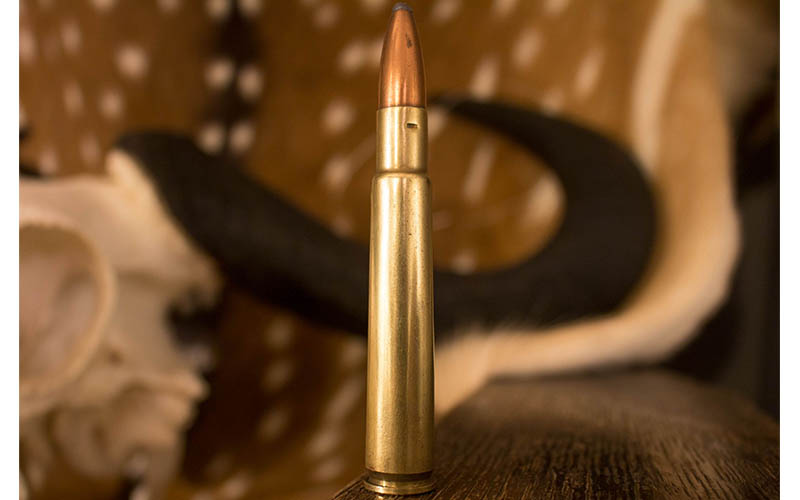
The classic .350 Rigby load sees a 225-grain spitzer bullet leaving the muzzle at 2,600 fps, making it a wonderfully effective choice for larger game. It was used as an all-around choice, but many hunters found there were better choices for thick-skinned, dangerous-game animals. It was a favorite of both Denys Finch Hatton and Bror von Blixen-Fineke. They found it to make a perfect light rifle on safari, and John “Pondoro” Taylor sang its praises as well, putting it on an equal plane with the .318 Westley Richards and .375 H&H Magnum as a do-all cartridge.
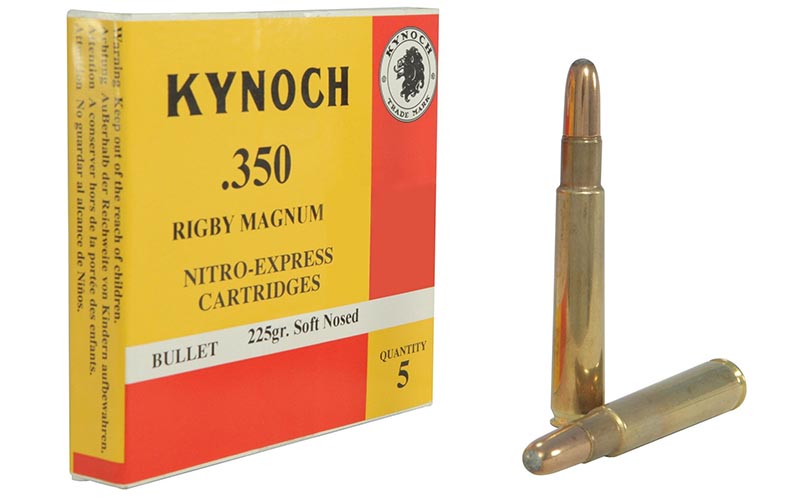
Component cases are available from Roberson Cartridge Company, and there are all sorts of excellent bullets to choose from, with reliable load data provided in the Woodleigh Reloading Manual. I’m aiming for a 250-grain bullet at 2,650 fps or thereabout, as the .350 Rigby Magnum has nearly the same case capacity as the .358 Norma Magnum. If you’re looking for a beefy cartridge that’s not your run-of-the-mill choice, the .350 Rigby Magnum should be on your list for sure.
Head of the Class
All you have to do is mention African dangerous game cartridges, and it’ll be a matter of seconds before someone throws the .416 Rigby into the mix. And that’s a good thing. It remains one of the best choices for the thick-skinned dangerous game animals.
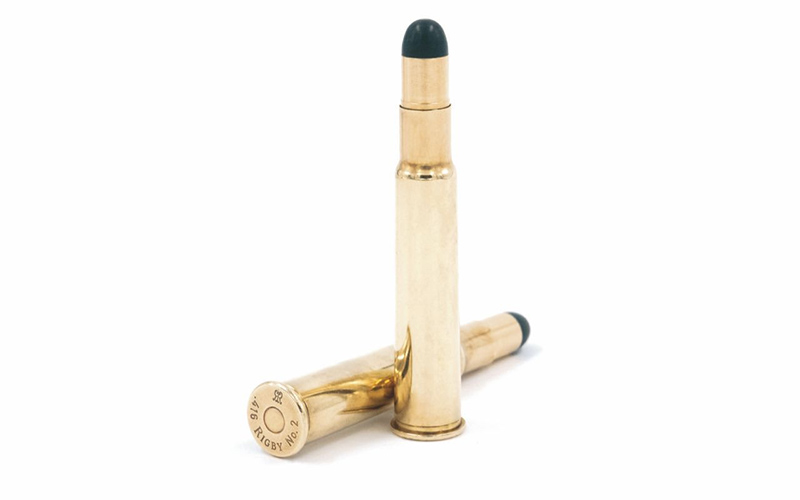
While the cartridge has always enjoyed a great reputation, not many Rigby rifles were chambered for it during the Golden Age of safari. In fact, from its release in 1911 until the outbreak of World War II, less than 170 .416 Rigby rifles were in circulation. It was a favorite of professional hunters, but being a proprietary cartridge, the .416 Rigby was certainly not as popular as the .375 H&H Magnum or the .404 Jeffery. It was, undoubtedly, Robert Ruark’s Horn of the Hunter that cemented the .416 Rigby’s place among the great cartridges. From 1911 until the late 1980s, the .416 Rigby was the only commercial cartridge in the bore diameter, and the case—much like the .350 Rigby Magnum—is a unique design having no parent case.
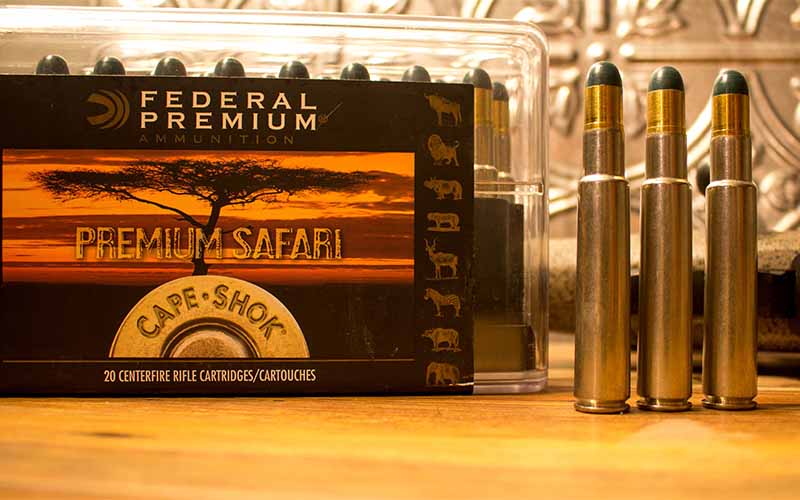
The .416 Rigby was advertised to drive a 410-grain bullet at a muzzle velocity of 2,300 fps. Dr. Kevin Robertson, however, tested some vintage Rigby ammunition and found the actual speed to be right around 2,150 fps—such is the way of things when dealing with century-old designs. Most modern loads use a 400-grain at velocities between 2,300 and 2,400 fps, generating somewhere around 5,000 ft-lb of energy, and there are a few different bullet weights up and down. I like the Woodleigh 450-grain Weldcore softpoint and full metal jacket solid loaded in the Norma African PH line at 2,150 fps. If you felt the .416 Rigby lacked anything as a stopping rifle, this pair of bullets will alleviate your worries.
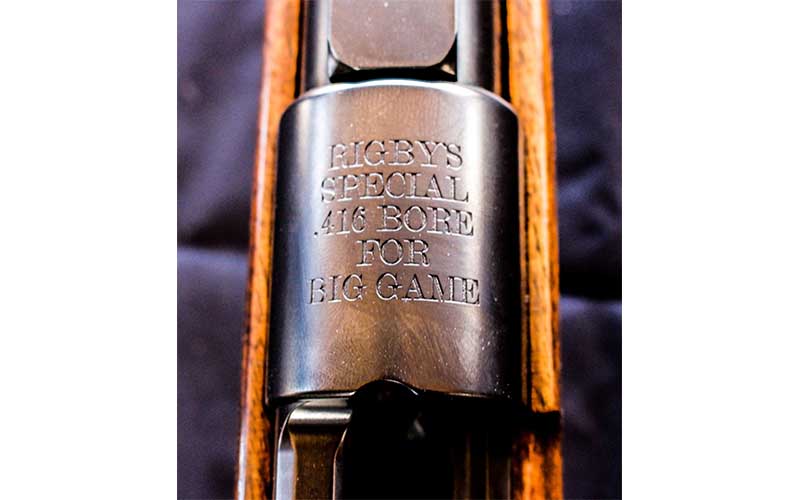
The .416 Rigby should be housed in a magnum-length receiver, and that big case—designed to combat the effects of tropical heat on cordite, keeping the pressures low enough for reliable extraction—will eat up magazine space. Many .416 rifles will have an Oberndorf-style magazine extension in order to get additional cartridges in the magazine. The 45-degree shoulder gives good headspacing, and the low pressure the cartridge generates remains an attractive feature to many African hunters.
As a side note, in 2019, Rigby announced the release of the .416 No. 2, a flanged or rimmed version of the .416 Rigby with identical ballistics, to be used in double rifles.
The Youngest Sibling
While the previous four cartridges are all well over a century old, the most powerful of the lineup was released in 1994, when Paul Roberts—then at the head of Rigby—necked the .416 Rigby case up to hold .458-inch-diameter bullets, creating the .450 Rigby to give better performance on dangerous game. Norma uses a 500-grain solid at a smoking 2,500 fps for over 6,900 ft-lb of muzzle energy, as well as the 550-grain Woodleigh pair at 2,100 fps. Nosler offers their 500-grain Partition at 2,350 fps for 6,130 ft-lb.
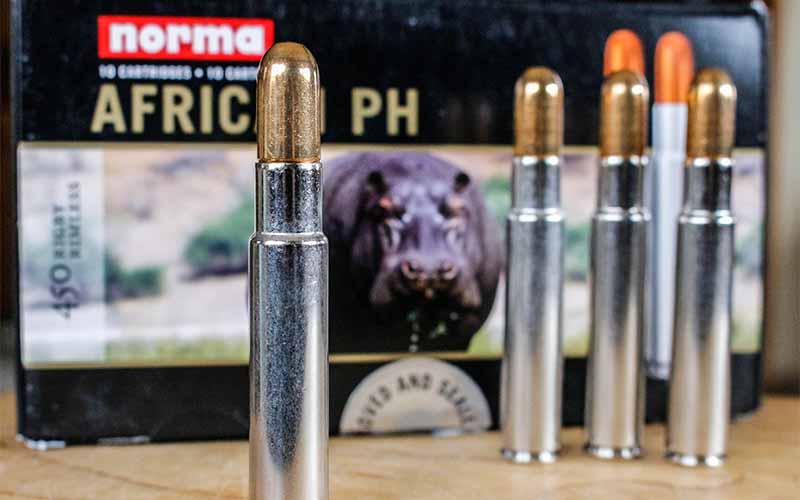
While it sounds horrific on the shoulder, the Rigby rifle I shoot fits me well, so recoil is more than manageable, being more of the classic push than the violent slap associated with cartridges that are both heavy and fast. If you feel the .416 Rigby doesn’t check all the boxes—and for the life of me I can’t imagine why you’d feel that way—the .450 Rigby offers a step up in horsepower for the biggest beasties, though the availability of ammunition pales in comparison to its older brother.
The Rigby Legacy
There’s no denying the importance of Rigby’s developments on the cartridge world. Consider the popularity of the .275 Rigby—in spite of it being a rebranding of the 7mm Mauser—because of the exploits and writings of Bell and Corbett, and the fact that they gave the world the .416-inch bore diameter.

Couple that with their .450 3¼-inch Nitro Express, which set the benchmark for dangerous game rifles, and you’ve got an indelible mark on the hunting world. And to be honest, I don’t know anyone who hunts with a Rigby cartridge and isn’t enamored with it.
Editor's Note: This article originally appeared in the July 2021 issue of Gun Digest the Magazine.
More Rigby Articles:
- Heirloom-Worthy Performance Of The Rigby Highland Stalker
- Greatest Cartridges: .416 Rigby
- Rigby Big Game Marks Renewel Of Renowned Partnership
- Video: .416 Rigby Safari Rifle

Next Step: Get your FREE Printable Target Pack
Enhance your shooting precision with our 62 MOA Targets, perfect for rifles and handguns. Crafted in collaboration with Storm Tactical for accuracy and versatility.
Subscribe to the Gun Digest email newsletter and get your downloadable target pack sent straight to your inbox. Stay updated with the latest firearms info in the industry.

![Best Concealed Carry Guns In 2025 [Field Tested] Wilson Combat EDC X9S 1](https://gundigest.com/wp-content/uploads/Wilson-Combat-EDC-X9S-1-324x160.jpg)


![Best 9mm Carbine: Affordable PCCs [Tested] Ruger Carbine Shooting](https://gundigest.com/wp-content/uploads/Ruger-Carbine-Shooting-100x70.jpg)
![Best AR-15: Top Options Available Today [Field Tested] Harrington and Richardson PSA XM177E2 feature](https://gundigest.com/wp-content/uploads/Harrington-and-Richardson-PSA-XM177E2-feature-100x70.jpg)

The .275 Rigby is NOT one of Rigby’s namesakes.
There was no such cartridge name as the “”.275 Rigby””.
It was always just called the .275. Rigby had nothing to do with the cartridge or its name, other than they chambered rifles and sold ammunition in what was a popular chambering. Even the ammo that Rigby repackaged and sold as “.275 bore” or “”.275 High Velocity” was made by German manufacturers, like Geco.
This persistent idea that the .275 is actually called the “.275 Rigby” and that it was a proprietary cartridge of theirs probably comes from people not understanding that Rigby advertised their Mauser rifles as “Rigby-Mausers” and when you bought one chambered in .275, then one might call it a .275 Rigby-Mauser. But the Rigby bit refers to the rifle brand name – not the cartridge!
The first one to ever call the .275 (or the 7×57) a “.275 Rigby” was not John Rigby &Co, they have never done it in any form or catalogue until the recent new company was formed – the first mention of it I can find was by Jack O’Connor in an article in the 1970’s, and American writers have followed his lead in this error ever since. British writers in general have not. The usually know it was just called a .275.
If you read the old authors you plainly see that they are aware that a .275 (or sometimes called a .276) is a 7mm Mauser. And you will never see them call it a “.275 Rigby”, not will you ever find an original Rigby-Mauser rifle with a cartridge marking of .275 Rigby or any catalogue listing in that name.
Just a big modern misunderstanding. And the notion that the .275 HV was actually a different chambering is balderdash: the HV load was the standard 140 grain load they offered ammo in, and regulated their rifles sights for. (In the UK in those days, the gunmaker sighted the rifle for the ammo you wanted.) The load was more appropriate for deerstalking in Scotland. Rigby didnt even have anything to do with that ammo either, they were reselling repackaged ammo made by other people under their own name – like the rifles themselves.
Please stop promulgating the “.275 Rigby”. It sounds likely, but its actually a fantasy cartridge name. But with the internet, it’s spreading. The new Rigby company are pretending they invented it and its a real name – (they are young men and probably dont know any better) and now even Hornady are offering brass headstamped .275 Rigby.
It has never existed before – but now it seems to be flourishing. The internet has talked it into existence.
275 Rigby…there fixed it for you.
How does the 275 Rigby compare to the 7×57 Ackley Improved cartridge and are they interchangeable?
You could shoot the .275 in the Ackley chamber but obviously not the other way around….